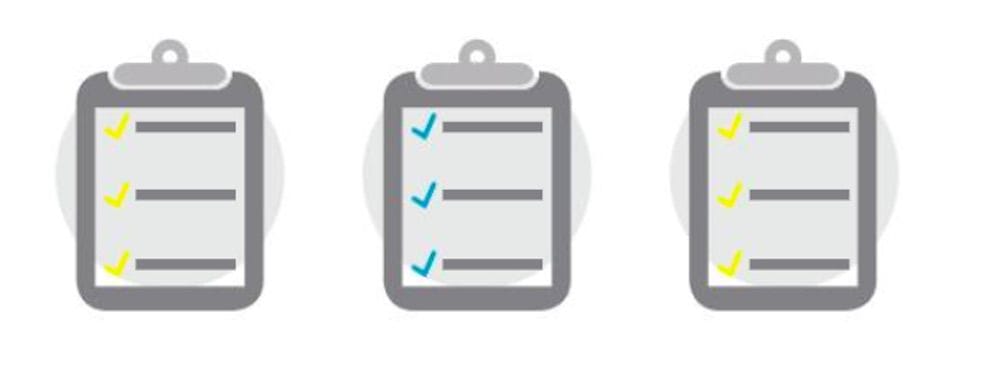Photos by Hillary Ehlen
With all the resources that the state has to offer, North Dakota has become one of the top states for small business startups. When starting your own business there are a lot of things to take into consideration, such as…
- Where do I get my financing?
- What is my business strategy?
- What marketing tools do I use?
- How do I measure success?
Here are some tips to help you get started in the right direction:
1. Establish Who Will Oversee HR Activities
This could be you, someone currently on your team or you may need to hire someone who has experience writing HR policies, hiring, firing, benefits, payroll, laws, onboarding and training just to name a few. There is also required reporting to the government entities and strict timelines to complete specific reporting. An example of this is if you have any government contracts, you will be required to create an Affirmative Action plan. Establishing who will oversee the activities will ensure you get things going in the right direction and you remain compliant as the HR industry is forever changing.
2. Ensure You Have a Clear Mission, Vision And Values For Your Company
Having a strong foundation will help when attracting new people to your company and as you expand, it lets your current employees know where you are going and what you value. Values can be expanded into what you want your culture to look and feel like, which also flows back into your companies’ brand.
3. Establish An Organizational Design
Typically associated with an organizational chart, organizational design is much more than that. It involves the creation of roles, processes and structures to ensure that an organization’s goals can be reached. This does not have to be elaborate, but it will be used as a guideline as you look at expanding your business. Learn more on organizational design at organizationdesign.net/whatisorganizationdesign.

4. Establish Onboarding And Recruiting Procedures
Even if your startup is small, you need to consider how to make hiring decisions. This includes where to post your job ads, how to determine who your target candidates are and how to structure the onboarding process. Whether you’re hiring your first employee or your 50th, make sure you have the necessary paperwork ready for them. This includes the:
- Offer Letter
- Employee Information for Payroll (including W-4)
- I-9 Employment Verification
- Any Employment Agreements (non-compete, intellectual property, etc.)
- Job Description
In addition to required paperwork, consider your onboarding process for new employees. A good onboarding process sets your employees up for success from day one. Make sure you are ready for them on their first day and use that time to establish expectations and introduce objectives. Check-in regularly with your employees during their first several months and maintain open communication with new hires.
5. Outline Regulations For Compliance, Safety And Health
A key point is making sure your work environment is safe for employees and meets federal, state and local regulations. Depending on your industry, your work environment may need to comply with the Occupational Safety and Health Act (OSHAct).
- Safety: This includes creating an emergency action plan, identifying emergency exits and routes, providing first aid and medical supplies and keeping the work environment safe.
- Behavior: This includes policies on equal employment opportunity in the workplace, as well as sexual harassment policies.
Developing an HR department focused on creating a workplace that complies with federal regulations for compliance, safety and health provides legal protection for your company. Regulations change often, which is where a dedicated HR person or team can help ensure you’re in compliance with federal, state, and local laws.
6. Maintain Employee Relationships
Employee grievances can and do happen. Your best approach to any situation is having established policies in place to handle complaints. Prepare to address any employee concerns by outlining your business’ standard of conduct, creating a plan to address issues and establishing a system for gathering employee feedback.
Along with addressing employee concerns, you should take an individualized approach to employee engagement to maintain relationships. Following up once a year isn’t going to cut it, and if you don’t consider employee engagement and satisfaction, you will end up with employees who are disengaged from their work. Employees need to know their purpose in your organization, find meaning in their work and gain skills to do their jobs well.
7. Create And Determine Your Compensation And Benefit Structure
Now that you’ve created your hiring process, you’ll want to know how to keep employees with your company for the long haul. Ensuring that your company establishes competitive compensation and benefits can help you get there. In order to establish these plans, you’ll need to determine what your pay structure looks like, as well as policies for vacation and sick time, retirement benefits and what system you will use to manage payroll.
- Pay Structure: Determine a pay structure that is competitive and fair based on an evaluation of your market. Learn how to create a competitive pay structure in a changing economy at bamboohr.com/blog/compensating-the-workforce-strategy. The Fargo Moorhead Human Resource Association has a salary survey available for purchase that provides information from businesses in the Fargo-Moorhead area.
- Benefits: Some benefits are voluntary and some are required by law. The most common voluntary benefits include medical, dental, vision, life insurance and retirement accounts such as a 401K or IRA. Mandatory benefits vary from state to state but can include workers’ compensation, unemployment insurance and disability insurance.
- Payroll Management System: There are dozens of different payroll management systems. Payroll errors can be expensive to fix. Do your research to find the best management system to fit your startup’s needs.

8. Develop Training Programs
Think about how you are going to grow your current employees and get them to the next level. What do they need to be successful? Ask them for their feedback on what they are interested in for growth opportunities. As your company continues to grow, how are you going to ensure your employees are prepared? These are great questions to help you develop the training program you need.
9. Performance Management Methods
How will you reward your employees? When will you and your staff check-in with employees to let them know how they are doing? Establishing when you and other members of the team will touch base with their staff and have performance conversations is critical to keeping employee retention, as well as performance issues, under control. Creating an evaluation form or some type of documentation is recommended to help with the discussions. Documentation will also be necessary if you find the relationship is not working out as you hoped it would.
10. Creating An Action Plan
The next step is to summarize overall work and prioritize specific action items based on the needs of the teams, keeping in mind budget implications for each item. Continue to partner with the leadership team as the business changes and grows to make sure the people are aligned to business strategy.
These tips will help you get your business off on the right foot and will set up your HR team for success. Keep in mind that whoever takes on the HR role is going to have a significant impact on shaping your company culture. Investing in your employees is a key factor in how your company continues to move forward.









